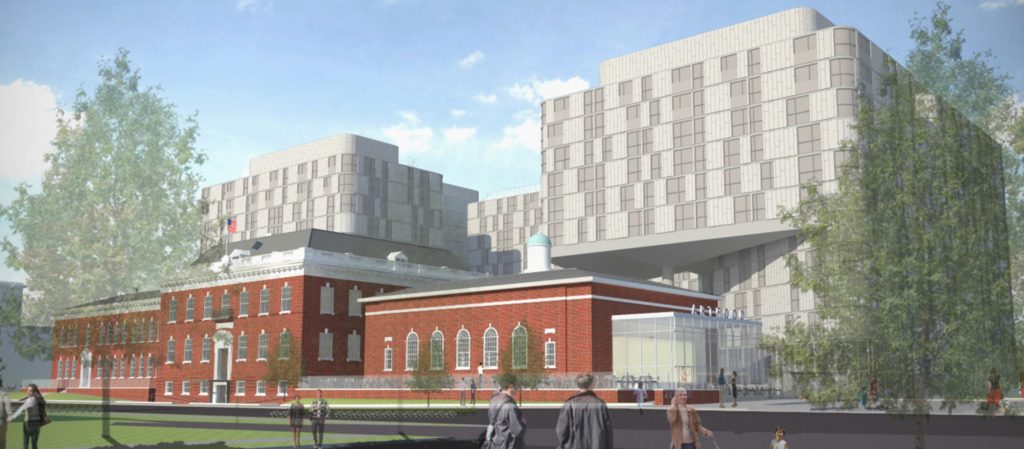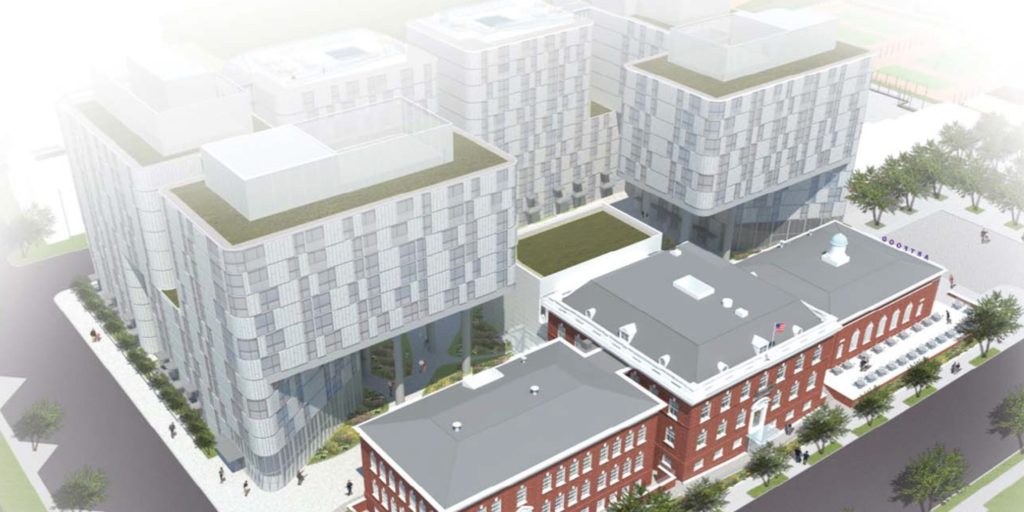By Lucy Rojansky
After more than 15 years of sitting empty, the storied Randall School finally faces an all but certain path to redevelopment.
On April 2, the DC Council voted unanimously to approve the Randall School tax abatement legislation originally proposed in 2018 by Ward 6 Councilmember Charles Allen. The bill provides for a 20-year reprieve from paying property taxes on the site, and clears the way for the development team to close its final round of financing and begin work on the project which includes an art museum, housing, public space and a cafe.
“It is really exciting to see this building, which has been lying fallow for so long, come back to life,” said Councilmember Allen. “It will bring homes, jobs and cultural amenities, not just to the benefit of Southwest, but to the entire city.”
According to a report by the city’s CFO, the abatement would create the financial conditions to make the redevelopment of the historic building possible. The abatement, not to exceed $1.7 million per year, will last for 20 years beginning in fiscal year 2023. In return, the city has mandated that the property include an art museum and affordable units.
For the project’s many supporters, including ANC6D, and Capitol Park IV, the townhouse condominium complex closest to the Randall School, the Council’s vote marks the end of an extended period of uncertainty and frustration.
“The time has come for this project to materialize,” said Bob Hall, president of Capitol Park IV, “and now it appears it is actually on track.”
The Randall School, once a thriving middle school anchoring the eastern edge of Southwest, was closed in 1978, and after that served as a shelter for homeless men. In 2006 it was sold to the Corcoran Gallery of Art, but due to the group’s financial woes, the plans for an art school foundered. The Corcoran opted to lease the site to TR Southwest LLC, which in turn chose Lowe Enterprises as the lead developer in 2017, but not before architectural renderings had been made by Bing Thom & Associates, the architecture firm behind the re-design of Arena Stage.
Recalling the intentionality and awareness of Southwest’s history with which the firm undertook the project, Hall said he had spent the good part of a day with Bing Thom architects, walking the site and providing suggestions from the site’s proximate neighbors as to how the ultimate redesign could fit seamlessly into Capitol Park IV’s backyard.
“They listened and incorporated every single one of our ideas,” he said. “Thanks to that, we became a huge advocate for this project.”
Though the project has morphed somewhat from its original Bing Thom design, Hall said the new development team—comprised of Lowe Enterprises, Telesis Corporation and the Rubell family—has continued the legacy of constructive engagement.
“These people care what the community thinks,” Hall said.
Once complete, the site will boast a 489-unit apartment building with 20 percent of the units set aside for workforce housing at 80 percent of Area Median Income (AMI)—translating to an annual income of about $80,000 for a family of three. The latest negotiations also yielded deeper affordability, with the developer committing to adding six units at 60 percent AMI (a family of three earning no more than $63,000), two of which will be two-bedroom units, and one of which will be a townhouse. The remaining three units will be one-bedrooms and efficiencies.
Central to the project’s justification for the tax abatement has been the art museum which will house some of the Rubell family’s extensive collection of contemporary art. As part of the negotiations for community benefits, the museum will offer free admission to all residents of the District of Columbia, and will be the first part of the project to be completed so that the community can begin to enjoy it.
“This building has been a blight for so many years,” said Andy Litsky, Advisory Neighborhood Commissioner for ANC6D-04. “The fact that it now can be redeveloped is a triumph, and that as a consequence of this abatement Southwest will become home to one of the premier museums of contemporary art? That’s enormous. And that it will be free to all residents of the District of Columbia? That is phenomenal.”



